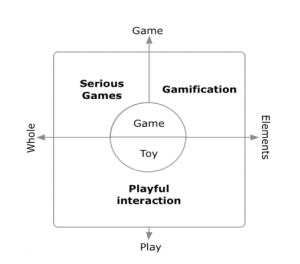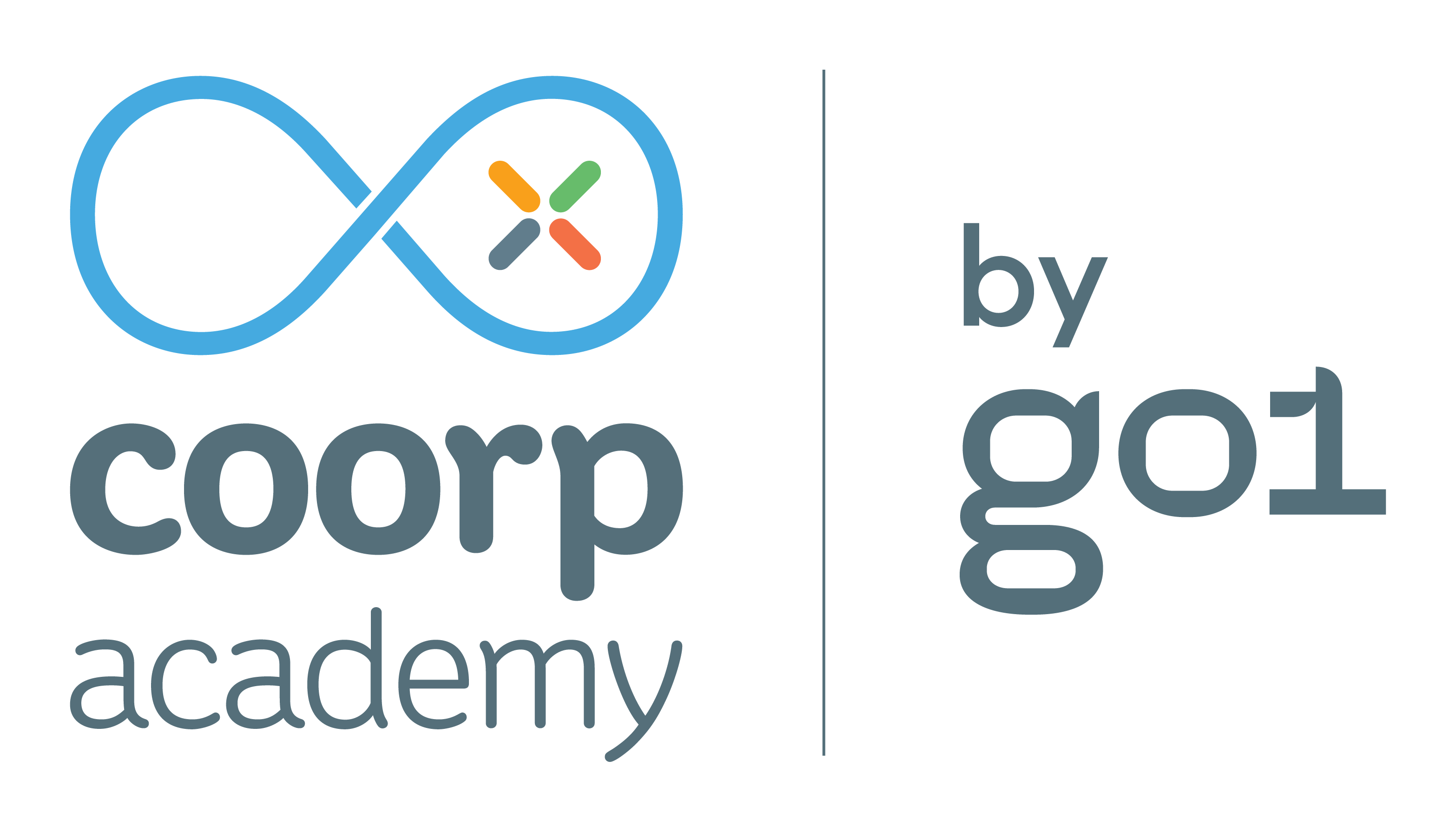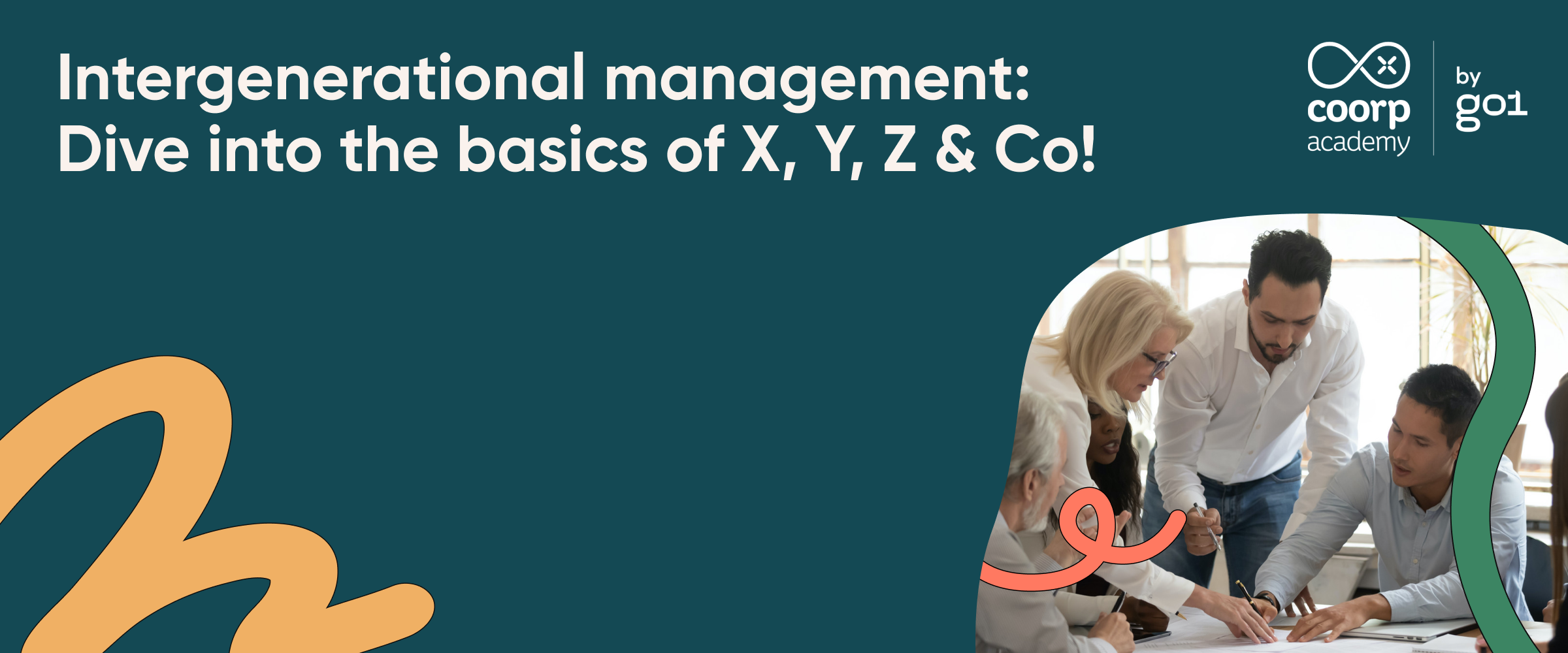The Science of Gamified Learning
Learning Innovation

By Jessica Dehler, Head of R&D at Coorpacademy
In the educational field, gamification has had an incredible success story in the last ten years. While in the beginning of this century, there was a clear distinction between “standard” learning and game-based learning, since then the “use of game-design elements within non-game contexts” (Deterding, Khaled, Nacke & Dixon, 2011, p. 1; also see Fig. 1), which is defined as gamification, has been applied in many learning settings, and in particular in corporate training. This spread of gamification was not unique to education but also applies to areas like health, work, data collection, software and tools, social networks, and environmental behaviour. The success of gamification may also be related to the fact that accessing (digital) learning opportunities has become so much easier and more democratic. With learning being available anytime anywhere, the crucial point of interest has shifted towards engagement and gamification was identified as a good candidate to help out.

Academic research is trying to catch up with the movement. An analysis on Google Scholar revealed that the number of scientific publications on the keywords “gamification” and “learning” has increased by a factor of 78 in the last ten years. The focus of research was primarily to validate that gamification positively affects performance. In their review, Hamarai et al. showed that 15 out of 24 studies found positive effects on engagement as well as quantity and quality of performance (Hamari, Koivisto, & Sarsa, 2014). As most studies focused on reward-based gamification concepts, the alarm bells rang: Would an over-emphasis on extrinsic motivation undermine intrinsic motivation and finally diminish engagement and performance?
The research community called for deeper approaches in the studies about gamified learning. Landers and Landers proposed to investigate the intermediate variables that mediate the effect of gamification on performance and identified time spent on tasks as such (Landers & Landers, 2014.) Many researchers requested that empirical work was needed to disentangle the different factors influencing learners’ motivation. Enter self-determination theory (SDT), one of the most remarkable and widely applied motivation theories in education (Deci & Ryan, 2002). It posits that well-being and personal growth can be achieved through the satisfaction of three basic psychological needs: autonomy, competence, and relatedness. Autonomy means that you are free to decide based on your own interests and values. Competence refers to how effective we perceive ourselves when reacting to the demands of the environment. This need also makes us look for optimal challenges for our own capacities. Relatedness refers to the connections and interactive support with others.
SDT was applied in order to a) inform the design and b) study the underlying mechanisms behind the positive effect of gamification on motivation.
In terms of design of learning environments, Groh (2012) proposed to foster the three psychological needs of SDT by the following interventions, which can be considered in training and learning initiatives:
Autonomy
Voluntary activity: Deciding when and what to play is an autonomous choice, and therefore is intrinsic.
Personal goals: Although users in a meaningful community share some interests, each user has different goals, and it is important to recognize that each user could follow their own path inside the gamification application.
Competence
Interesting Challenges: There should be a good connection between difficulty and the required skill to perform. Something really easy or really hard could decrease engagement, however increasing difficulty with time will increase engagement.
Meaningful feedback: Whether you win or lose, feedback is the key for effective learning. This also implies that errors are allowed.
Relatedness
Meaningful Community: intrinsic motivation is increased if the learner is part of a community that shares the same interests. This also fosters learners’ confidence.
The SDT was also used in studies that tried to disentangle the effect of diverse game design elements instead of dealing with gamification as a unified concept. Recent work by Sailer et al. was able to demonstrate in a digital warehouse that game design elements had specific effects on psychological needs (Sailer, Hense, Mayr, & Mandl, 2017). They put logistics apprentices in front of a learning game, and divided the poll into 3 groups. Learners in experimental condition 1 who were provided with leaderboards, badges and performance graphs self-reported significantly higher levels of satisfaction in the need for competence compared to a control group (the ones who would just do the learning game):
Learners in experimental condition 2 who could choose an avatar and could see other teammates reported significantly higher levels of satisfaction in relatedness than learners in the control group.
Interestingly, the perceived autonomy with regard to freedom of decision was not influenced by any of the experimental conditions. It seems that freedom of choice is a basic instructional design principle independent of game elements.
As a wrap-up, we see that gamification works and there is much more about it than simple rewards such as points, leaderboards and badges. It actually does work because specific game design elements effectively address specific psychological needs that are determining motivation and thus engagement.
The review of this empirical research comforts us in our design choices: challenging peer learners in a battle demonstrates mastering a skill and reinforces relatedness in a common goal of progression, peer coaching creates meaningful community, direct feedback in learning modules and story-linked feedback in branching modules work towards competence, and flexibility has always been a building block fostering autonomy. When we’re analysing our battle data, we’re comparing engagement and performance indicators of learners who play battles and learners who never play battles. We found that battle players are up to 4 times more engaged with the learning material and are successfully completing two times more modules (see Fig. 2).

a) Engagement with learning material

b) Performance Indicator
Fig 2. Difference between battle players and non-battle-players regarding a) number of distinct learning videos watched and b) percentage of successfully completed modules from started modules (i.e. success rate).
In order to leave you with an inspiring concept, let us insist on the importance of activities that are enjoyable – though not only that – but that are also valuable for the user, for their work and life, as proposed by the notion of meaningful gamification (Nicholson, 2015). In times where lifelong learning has much value for our employability and wellbeing at work, the most basic and efficient recommendation of all has become our credo at Coorpacademy: Enjoy learning!
References:
Deci, E. L., & Ryan, R. M. (2002). Handbook of self-determination research. University Rochester Press.
Deterding, S., Khaled, R., Nacke, L., & Dixon, D. (2011). Gamification: Toward a Definition. Paper presented at the CHI 2011, Vancouver.
Groh, F. (2012). Gamification: State of the art definition and utilization. Institute of Media Informatics Ulm University, 39, 31.
Hamari, J., Koivisto, J., & Sarsa, H. (2014). Does Gamification Work? — A Literature Review of Empirical Studies on Gamification. In System Sciences (HICSS), 2014 47th Hawaii International Conference on (pp. 3025–3034).
Landers, R. N., & Landers, A. K. (2014). An Empirical Test of the Theory of Gamified Learning: The Effect of Leaderboards on Time-on-Task and Academic Performance. Simul. Gaming, 45(6), 769–785.
Nicholson, S. (2015). A recipe for meaningful gamification. In Gamification in education and business (pp. 1–20). Springer.
Sailer, M., Hense, J. U., Mayr, S. K., & Mandl, H. (2017). How gamification motivates: An experimental study of the effects of specific game design elements on psychological need satisfaction. Computers in Human Behavior, 69, 371–380.


